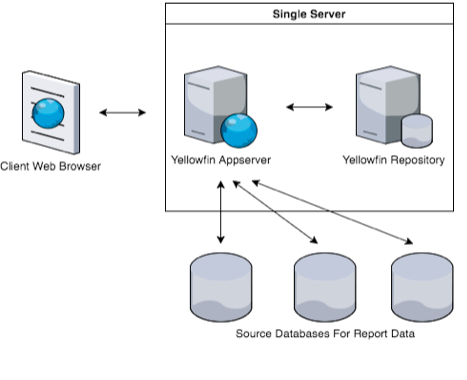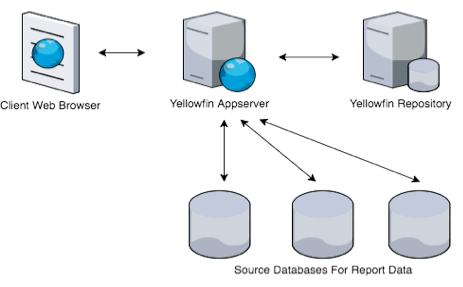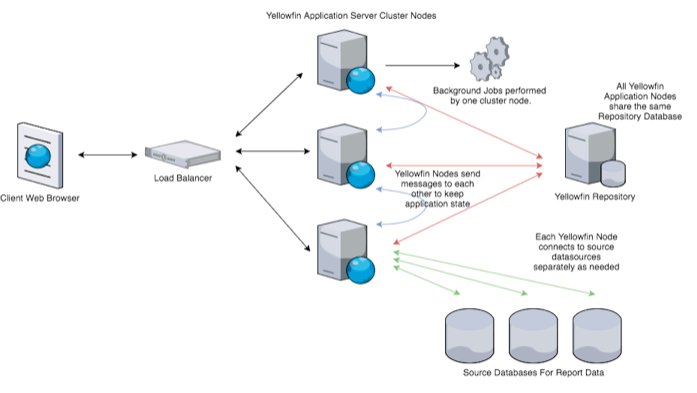Page History
Yellowfin can be installed in different configurations based on the specific needs and projected user’s volumes. Listed below are three possible configurations and the scenarios in which you may choose to use them. These three examples are:
- Single Server Installation
- Separated Application and Database Server
- Multi Server Clustered Installation
...
Single Server Installation
This layout has the Yellowfin application server and the repository database co-existing on the same server. The reporting source may also reside in the same DBMS as the repository.
This is an ideal implementation for a small number of concurrent users. It minimizes hardware cost and installation effort to allow a rapid implementation of Yellowfin. This configuration removes any network latency between the Yellowfin application and the database server, but both systems share system resources.
Separate Application and Database Server Installation
Separating the Yellowfin configuration database and the Yellowfin application server will provide a more scalable option to support larger user numbers. It also provides better capability to tune the reporting server and database management independently. This is the recommended configuration for single node Yellowfin configurations.
This configuration does introduce network latency between the Yellowfin application server and repository server, but does allow for an entire system to be dedicated to each component. Clustering from this configuration is also simple. Additional application server nodes can be connected to the repository for greater capacity.
Cluster Installation
For large numbers of concurrent users and high availability, Yellowfin can be deployed as a cluster.
Each application server node added to the cluster increases capacity for supporting additional users. Processing load is distributed across available nodes.
...
Yellowfin nodes share a single repository database, and thus this should also be scaled to support the load of the cluster. It is recommended that a clustered database system also be used to provide additional capacity for both the Yellowfin repository and reporting data sources.
Server Placement Considerations
The geographic spread of users and the resulting placement of the various Yellowfin servers for optimal performance are of particular interest during deployments. This section discusses key considerations with respect to the placement of the various Yellowfin components and interaction with the end user client.
Application & Yellowfin Database
...
In general, the network bandwidth between the web server and web browser is the most unreliable and least controllable by the organization. For this reason, when users are highly distributed and high bandwidth networks do not exist, it is common to place web servers closer to remote users. However, once the static content is initially cached by a user’s browser, most requests generated by a user will be dynamic requests for the application server.
| Section | |||||||
|---|---|---|---|---|---|---|---|
|
...


